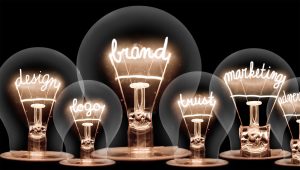Brand-Power is Real — but the Goalposts Won’t Stop Moving
 From the upstarts to the everlasting, branding and marketing drive sales.
From the upstarts to the everlasting, branding and marketing drive sales.
That goes beyond mere recognition, and requires a certain stability: Sellotape, Google, and Rollerblade are generic terms intrinsically tied to products. Big name firms are those most able to weather difficulties, but over recent decades, brands have had to face a growing number of disruptors.
During the 2008 global financial crisis, according to Edelman’s Barometer, brands saw a 20 percent drop in public trust. As income slipped away and redundancy figures rose, people began to lose faith in the companies they had come to know and love.
They cut back on consumption — and started to expect more from leadership. They diversified their purchases, and supermarkets began to stack competing products. The advent of peer-to-peer reviews meant brands could no longer hide behind a logo.
The pandemic has, in many ways, been a successor to the 2008 crisis. In 2020, 60 percent of those canvassed by Edelman were putting their trust, and their money, into recognised brands. But in 2008, it was the failure of a branded bank that triggered the economic collapse. It lost the public’s trust because there was no accountability. Consulting firm McKinsey says consumers are now selecting businesses that have best adapted to the pandemic landscape. With fear spreading across the globe, producers of staple goods have seen their profits rise.
Trust in branding
Amazon is a shining example of brand trust. The AmazonBasics line, a private label owned by the e-commerce titan, started supply customers with supporting products for larger purchases. Buying a new TV? Well, you need cables and wall-mounts and a stand to make the most of your purchase. Amazon fills that need across all markets.
How does it produce products from such disparate industries? It doesn’t. Recognition and innate trust drive customers towards branded — but third-party-made — products. This, combined with lower shipping and packaging costs, means Amazon can undercut its competitors.
Throughout the pandemic, the Amazon name and logo have been used to maximum effect, and the company has more than doubled its revenue. But how will branding reliability change going forward?
Recent consumer surveys suggest businesses will need to change. Back in 2008, transparency suddenly became vital. In 2021, the public expects that as a given — plus health, security, and social outreach.
A recent Deloitte report shows a significant parallel between concern over personal wellbeing and propensity to purchase a named brand. Consumers prefer brands owned by businesses that are recognised for job security and labour protection. If they value their employees, customers will be inclined to value the product. ESG is the top priority today. Before the pandemic, niche companies dominated the sustainability market.
Established brands have had to adapt to match the disruptors. Those which best transform to meet consumer preferences and socially responsible criteria are likely to emerge as winners.
By Yogesh Patel
You may have an interest in also reading…
Double Dip Recession in the Making, UK Expected to Emerge First
The Deutsche Bundesbank expects a double dip recession. Analysing non-traditional indicators such as Google Map traffic data and air and
Many a Titter about Twitter as Musk Bungles his Big Purchase
Dust off your shovels! Elon Musk has bought himself into a $44bn hole, and you’re expected to dig him out
Working from Home, or Living at Work? Hybrid is ‘Hell’, and a Return to Office may be Worse
The future of work is remote, and many of the world’s corporate heads — and workers — are ready to


















































































